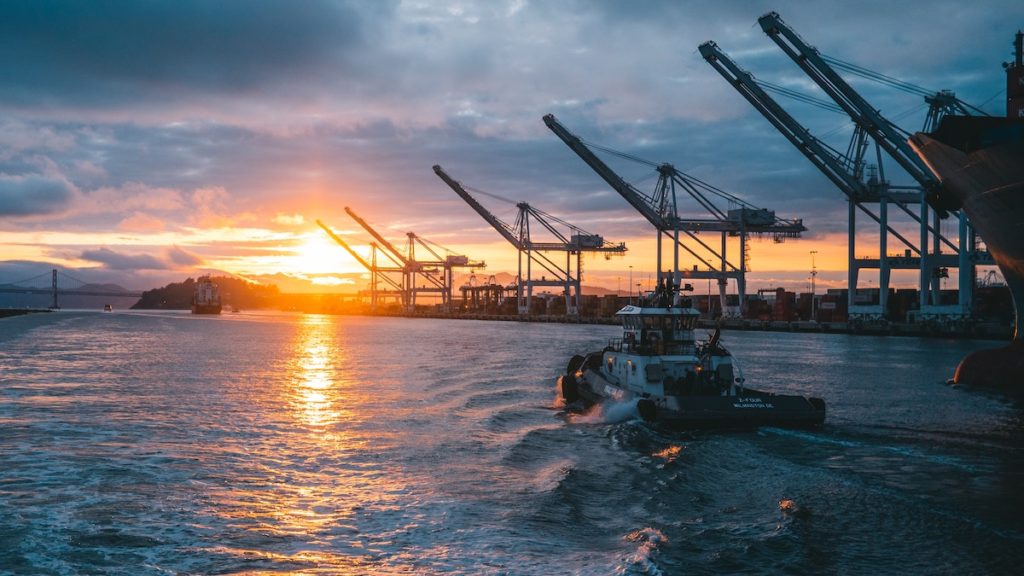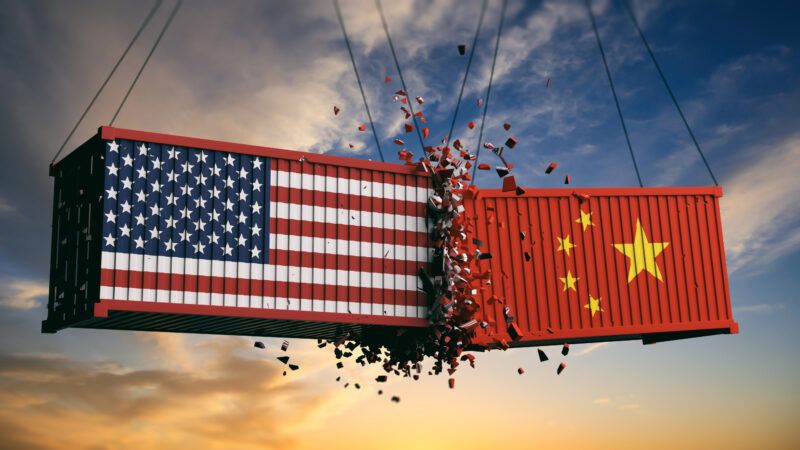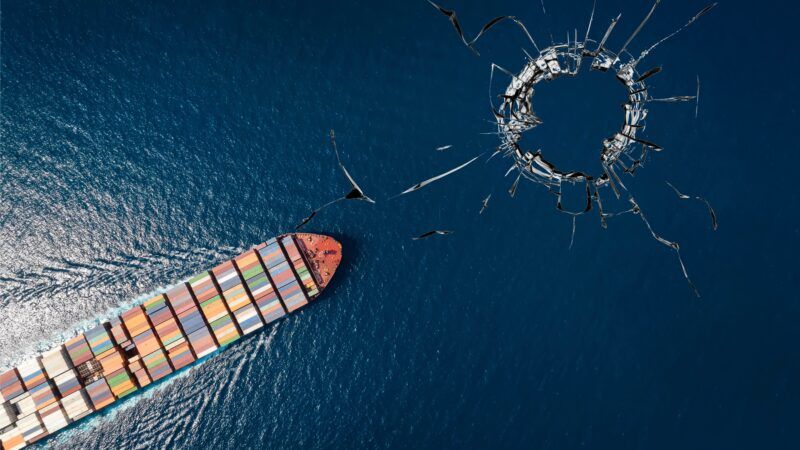 According to Sea Intelligence, the economic impact of COVID-19 during the first 15 weeks will be of $1.9 billion for maritime trade. (Image by Fusion Medical Animation)
According to Sea Intelligence, the economic impact of COVID-19 during the first 15 weeks will be of $1.9 billion for maritime trade. (Image by Fusion Medical Animation)
How does coronavirus affect maritime traffic?
The spread of COVID-19 has had terrible consequences on an international level ever since it first became a public health concern in China. Its negative impact on freight has been larger than the growth this sector experienced in 2019. But operators have started to take action to mitigate these effects.
 According to Sea Intelligence, the economic impact of COVID-19 during the first 15 weeks will be of $1.9 billion for maritime trade. (Image by Fusion Medical Animation)
According to Sea Intelligence, the economic impact of COVID-19 during the first 15 weeks will be of $1.9 billion for maritime trade. (Image by Fusion Medical Animation)
Pandemics and maritime transport have always been connected. COVID-19, also known as the coronavirus, is having terrible consequences for the health and economy of the planet. This March, the focus is shifting to Europe and the United States, with thousands of people infected in both continents. On 11 March, the World Health Organisation reported that 114 countries had registered cases of the disease. As the number continues to grow, governments are taking drastic measures to slow the spread of the disease.
This information led the WHO to declare COVID-19 a pandemic on that very same 11 March. But despite the alarming figures, there is still room for hope. China, the source of the outbreak and the country with the highest number of infections, is starting to contain the virus after the decisive response of its government. Just like in South Korea, another country that registered cases during the early stages of the crisis. Thanks to some efficient measures, Seoul’s authorities have been able to alleviate the consequences.
As well as the repercussions on public health and until the contention measures put in place by other countries and the WHO yield results, maritime transport of passengers and cargo is going to be one of the fields most affected by the coronavirus’ disruption of the world economy. The effects of COVID-19 in this field are of paramount importance for the entire world, as 80% of the world’s goods are transported by sea.

Several institutions have already evaluated the impact. According to Sea Intelligence, the economic impact of COVID-19 during the first 15 weeks will be of $1.9 billion for maritime trade. On the other hand, McKinsey & Company reports that by 23 February the coronavirus had already caused a 1% drop in the volume of maritime traffic all over the world. This number is higher than the total growth registered in 2019 by this sector, which was 0.7%.
As coronavirus spreads throughout Europe and North America, McKinsey & Company calculates that the weekly losses in the profit margins of maritime transport can add up to $350 million.
The impact on routes
Another indicator of the effects of COVID-19 has been the growing number of blank sailings issued by maritime transport companies. Especially for routes originating from the Chinese ports most severely affected by the slowdown in economic activity the country suffered during the worst weeks of the health crisis.
Turning back to the results presented by Sea Intelligence, there have been 111 cancellations on transpacific routes, of which 48 are due to COVID-19, the rest being the usual cancellations that take place during the Chinese New Year. According to McKinsey & Company, 46% of scheduled departures along routes between Asia and Europe have been cancelled. On the other hand, DHL published in its March 2020 Ocean Market Update that traffic from Asia would take weeks to normalise.
The most obvious consequence of this reduced number of sailing ships is the shortage affecting certain key industries, such as the car industry or the technology industry. Consequently, several European car factories have already announced that they are halting production, as has been the case of Nissan, SEAT or Fiat.
But there’s also some good news. Having overcome the worst, China’s ports are already starting to recover their usual operational pace. For instance, Shanghai and Hong Kong are fully and effectively operational; Qingdao and Tianjin started operations on the week of 16 March, but still present a low efficiency, whereas Shenzhen and Guangzhou are operating at 90% and 70% of their respective capacities. However, now that the problem is affecting the other end of the chain, namely Europe and the United States, it doesn’t look like commercial activity is going to recover quickly.

To quantify the impact on the global economy, data should be continuously reviewed due to the ongoing spread of COVID-19. But, based on the consequences it’s had so far, McKinsey & Company reports that, based on the data of late February, the seven countries most affected by the pandemic—China, South Korea, Italy, Japan, Singapore, Iran and Germany—accounted for 32% of the world’s GDP. A number that will grow now the virus is spreading throughout the United States and Europe.
In light of these impacts on international maritime traffic, the Port of Barcelona has announced the application of a number of measures to alleviate this negative impact on its concessionaires and clients. These actions are in line with those announced by the European Commission and the Spanish and Catalan governments.
The most urgent one is the non-application of sanctions to terminals that don’t meet their minimum traffic requirements, as long as this is a result of the spread of the coronavirus. Likewise, occupancy fees will now be paid once a month instead of every three or four months. This will help companies better deal with strains in their treasury or liquidity problems. This measure will remain in force until 31 December 2020.
These measures are in line with the actions being carried out by the entire port sector, which could be summarised as follows:
- Developing contingency plans and establishing minimum services to guarantee the continuity of operations.
- Guaranteeing the safety and health of the port workers, insofar as possible.
- Making sure that the imposed controls don’t cause additional disruptions to the logistics chains, especially those affecting basic and essential services.
- In many cases, restrictions are being imposed on passenger ships, cruise ships and ferries.
In some cases, the maritime sector is also trying to assist with the deployment of healthcare workers. Two noteworthy examples are the Port of Tarragona, which offered health authorities an open shed where they can treat people infected by the pandemic; and GNV, which offered to turn a ferry in Genoa into a hospital ship.
In any case, crises are useful for learning lessons and improving in the future. This COVID-19 has taught the port and maritime transport sectors that their strategies for handling future crises should contemplate scenarios with pandemics that affect the global economy.
Having overcome the worst, China’s ports hope to recover their usual operational pace
Maritime transport and pandemics, an old story
Despite our understandable feeling of living exceptional times, having transport disrupted by pandemics is nothing new. International flights have of late been an important vector of contagion, as has been the case with COVID-19, but also with SARS in 2002-2003 or the 2009 flu pandemic.
In the past, maritime transport used to be the key vector for spreading pandemics. For instance, there was the so-called Spanish flu of 1918, which affected millions of people. Despite its name, it could have originated in Kansas or in Switzerland, but it became associated with Spain because this was the first country to report the disease, as most of the world was preoccupied with the First World War.
The Spanish flu spread quickly because of passengers travelling all over the world by boat and train. And let’s not forget the movements of hundreds of thousands of troops deployed during the Great War. Some of the main sources of infection were ports, such as those of New York, Brest, Philadelphia, Freetown or Boston, as no measures were taken to quarantine carriers of the disease.
If we turn to another historic pandemic, the Black Plague of the 16th century, it’s easy to notice its main propagation vectors coincided with the most popular commercial routes of the time. Most historians agree it came from fleas carried by Mongolian rodents. These parasites would leap onto humans and inoculate the disease through their bites. From the central Asian steppes, it travelled to China, and from there it spread along the Silk Road and in tandem with the movements of Mongol armies.
It reached western Europe through maritime transport. The Mongols of the Golden Horde besieged the city of Caffa in 1346-1347. One of their siege tactics consisted in infecting target populations with the plague, a fascinating example of mediaeval germ warfare. One such population was a Genoese commercial centre and the then city-state negotiated the evacuation of its merchants by sea.
The Genoese thought they were escaping the wrath of the Mongol warriors, but little did they know they carried a bigger threat away with them. A few weeks after leaving Caffa, in October 1347, they reached the Sicilian port of Messina. Many sailors died from the plague during the voyage and others disembarked sick. What’s more, the ship holds also contained rats covered in the lethal fleas that also went ashore.
From Sicily, the disease spread all over western Europe. First throughout the Italian peninsula. Then to France, England and the Iberian Peninsula in the summer of 1348. The plague even reached the Middle East through some of the region’s main ports, such as St. John of Acre or Sidon. Certainly, a historical example that reminds us that COVID-19 isn’t the first pandemic humanity has had to face down.






